Table of Contents
Are you a seasoned blogger? If the answer is ‘Yes,’ you know well how crucial it is to produce impeccable content; otherwise, you risk getting into digital trouble! It’s not enough to just have ideas that captivate your audience and enchant search engines with your genius.
Get with just one click:
- Captivating content that grabs your audience’s attention
- Unmatched creativity for emotionally engaging content
- Trend-savvy copy to climb the search rankings
Yes, in the chaos of content creation, when distraction and haste take over, those trivial errors that play nasty tricks can emerge. And that’s where editing and proofreading tools come into play, which we’ll discuss in this article. They are there to rescue you from your worst ‘digital distracted’ mistakes. They are the secret allies of your success in the blogging world. So, get ready to enter the realm of linguistic perfection and discover how these tools can transform you from a ‘reckless blogger’ into an ‘online word master’.
Editing: The Cornerstone of Writing Quality

Editing is like the master artist who transforms a rough painting into a sparkling masterpiece! It’s the process where the magic of thorough and detailed revision blends with creativity to take the text to the next level. There’s no joking here: every comma, every word is under the magnifying glass.
In the world of editing, nothing escapes. Grammatical errors, spelling heresies, and punctuation oddities are banned without appeal. It’s like a precision operation, where form and content merge to create an impeccable result.
And then there are the various facets of editing, each with its own special touch. There’s graphic editing, which is like the architect shaping the text on the page, making it visually appealing. Then there’s formal or stylistic editing, which adds that touch of class and coherence, making the writing style shine.
Let’s not forget structural editing, the master of organization and structure. It’s like putting every puzzle piece in the right place so that the text flows effortlessly. And finally, there’s content editing, the heart of the process, dedicated to making the meaning and quality of the content simply extraordinary.
In short, editing is an art that makes the text shine in every aspect. And it’s what turns good content into something truly exceptional!
It’s important to keep in mind that editing varies depending on the type of text. Indeed, every piece of writing requires patient correction, focus, and fine-tuning.
That’s why during the editing process, it’s ensured that the content is well-organized, easy to understand, and flows smoothly to read. Thanks to this process, it’s possible to correct any form errors, ensure that the text makes sense, and that it’s well-structured in all its parts.
Furthermore, it’s possible to verify that the stylistic register and the ‘tone of voice’ used are consistent and appropriate and make adjustments to these aspects if necessary. It’s essential to ensure that the style is suitable for the content presented, the audience the text is addressing, and the communication’s objective.
The ultimate goal is to make the effort of writing disappear, creating a clear, engaging, and high-quality text. For this reason, if you want to improve your text and make your writing more effective, editing is the key to success.
The Importance of Editing
Editing is a fundamental process for improving the quality of a text. When a text undergoes editing, changes and corrections are made to make it clearer and more understandable for readers. This process aims to effectively convey the intended message and create a better impression on the person reading the text. Furthermore, editing helps ensure the accuracy of the information presented in the text.
To achieve a well-edited text, it’s necessary to work carefully on various components of the text, such as grammar, style, structure, and content. During editing, grammatical errors are corrected, sentences are improved to make them smoother and more coherent, repetitions are eliminated, and passages that may be unclear are enhanced.
Furthermore, editing allows for checking the accuracy of the information presented in the text. This may include checking the sources cited in the text, confirming statistical data, or researching additional information to support the claims made in the text. In this way, editing ensures that the text is reliable and that the information presented is accurate.
Ultimately, the ultimate goal of editing is to enhance the reading experience of the audience. A well-edited text is clearer and more understandable, making it easier for readers to read and understand the message. This contributes to creating a better impression of both the text and the author because a clear and well-structured text demonstrates that the author has invested time and effort into producing quality work.
In conclusion, editing is a fundamental process that enhances the overall quality of a text. Through corrections and improvements, editing makes the text clearer, more effective, and accurate. Working on editing a text is an important phase that allows optimizing its linguistic qualities and successfully conveying the desired message to readers.
7 Compelling Reasons to Harness Editing in Blogging

- It Enhances Content Quality: Imagine your writing as a rough block of marble. Editing is the chisel that sculpts and refines your masterpiece, making every word precious. Eliminate the obstacles of grammatical errors, polish the surface of sentences, and reveal a clear and fascinating message. Well-edited content attracts the audience like an irresistible light.
- Increases Credibility: When your readers immerse themselves in your articles, they want to feel in good hands. Editing showcases your commitment to perfection and reassures them of your competence. Your credibility swells like a ball raised high.
- Search Engine Optimization (SEO): Editing is not only an art but also a strategy. You can cleverly integrate keywords, shape the structure of your articles, and facilitate search engine indexing. This helps you climb the rankings like a true professional.
- Message coherence: In a world of digital voices, your distinctive voice is like a recognizable tune. Editing maintains this consistency, ensuring that each article reflects your personality and your brand uniquely.
- Reduction of embarrassing errors: Imagine avoiding the embarrassment of a typographical error in front of a large audience. Editing is your ally in the fight against errors that could sabotage your reputation.
- Improvement of Engagement: A well-edited text is like a spell that keeps the audience fascinated until the last word. Editing captures attention, eliminates boredom, and keeps the audience engaged.
- Time Saving: The time dedicated to initial editing results in long-term time saving. Less future corrections mean more time to create new content.
In summary, editing is the beating heart of your success in blogging. It is the art of transforming raw words into digital gems, earning the trust of your audience, and climbing the peaks of search engine rankings. It is not just a practice, but a powerful alchemy that transforms your writing into pure gold.
Editing Tools
In the digital world, there are numerous editing tools available, from automatic correction software like Microsoft Word to advanced online editing tools. These tools simplify the correction process and allow for a more efficient review.
In summary, editing is the process through which a text is perfected, ensuring that it is clear, coherent, correct, and ready to be shared with the public. It is an essential part of the professional writing process.
Among the useful editing tools we find:
Microsoft Word:
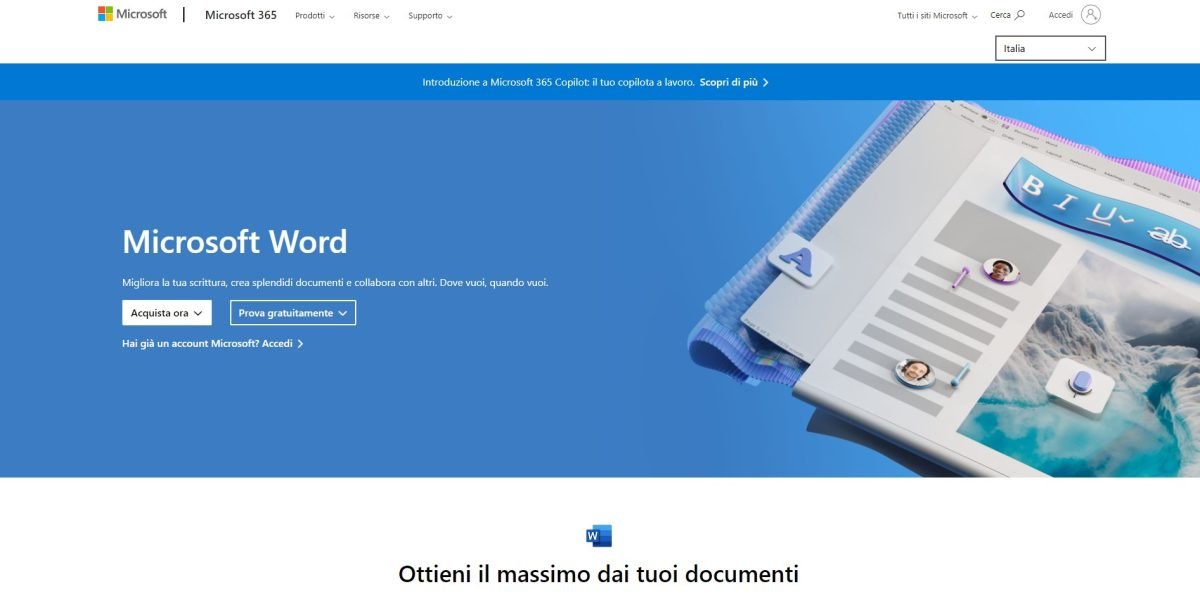
It is a word processing software developed by Microsoft. It is part of the Microsoft 365 productivity suite (formerly known as Office 365) and is widely used to create, edit, and format text documents. Among its main features:
- Creation of Documents: Microsoft Word allows users to create text documents, such as letters, reports, resumes, and much more. You can start with a blank document or use one of the many available templates.
- Spelling and Grammar Correction: The software includes a spelling and grammar correction tool called Microsoft Editor, which helps identify and correct spelling and grammar errors in your documents.
- Real-time Collaboration: It is possible to share documents with other people and collaborate on them in real time. It is particularly useful for group work and shared document editing.
- Advanced Features: Microsoft Word also offers advanced features such as change tracking, table insertion, charts and images, as well as the ability to create complex documents such as theses or manuals.
Microsoft Word is widely used in professional and personal contexts for the creation and management of text documents. It is one of the most popular tools in the field of word processing and is available on different platforms, including Windows computers, Mac, and mobile devices.
Apache OpenOffice Writer:
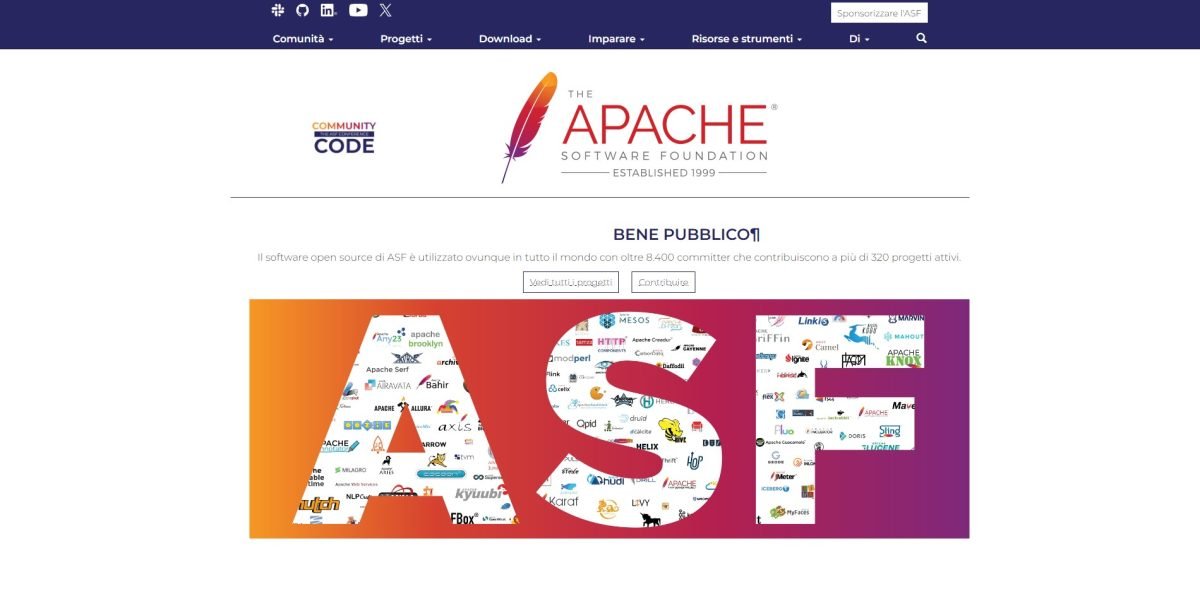
It is a free word processing application that is part of the Apache OpenOffice productivity suite. It is a software that allows you to create text documents of various types, from simple memos to more complex documents such as books, theses, business reports, and much more. Writer offers a wide range of features, including the ability to insert multimedia content, tables, charts, and indexes. It is compatible with various file formats, including Microsoft Word document format, thus ensuring greater interoperability.
Apache OpenOffice is a free software, which means that you can download it, install it on multiple computers, and share it with others at no cost. It is an ideal solution for anyone who needs a powerful and free word processing application.
Apache OpenOffice Writer also includes a spelling and grammar correction function. This tool helps you identify and correct spelling and grammar errors in your documents, thereby improving the quality of your texts. You can activate this function in the Writer options and customize it according to your language preferences. It is a useful tool to ensure that your documents are error-free before publishing or sharing.
LibreOffice Writer:
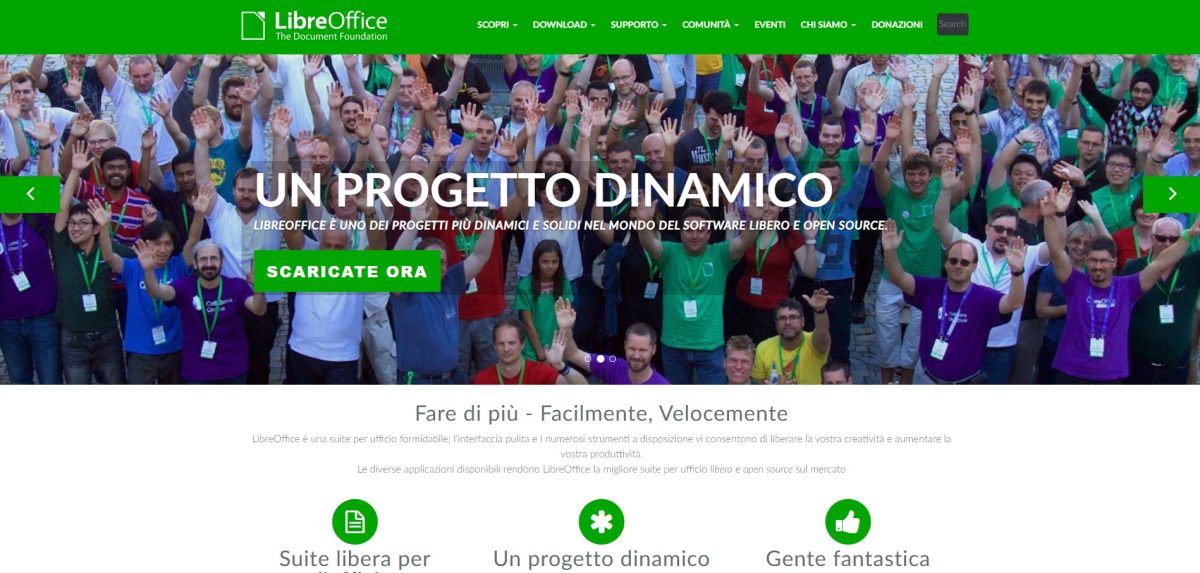
It is a powerful word processing and desktop publishing tool that is part of the LibreOffice personal productivity suite. This software offers all the necessary features to create high-quality documents, including books, reports, memoranda, and much more. It is intuitive enough for quick use, but at the same time powerful enough to meet the needs of creating complex content, such as books with graphics, indexes, and more. It is available for free for Windows, macOS, and Linux systems.
LibreOffice Writer is a versatile and free application that can be a valuable resource for creating quality documents.
Proofreading: The Art of Perfecting Content in the Blogging World
In the vast universe of online writing, proofreading stands as a fundamental pillar to ensure the quality of your content.
Proofreading is the process of revising a text in order to identify and eliminate grammatical, spelling, punctuation, and style errors. It is a crucial and final step in the production of quality written content, which allows for correcting any flaws or inaccuracies that may compromise the understanding and effectiveness of the message to be communicated.
In the specific context of blogging, proofreading plays an even more important role. Blogs are platforms where ideas, opinions, and information are shared with a wide audience of readers. It is therefore crucial to present written content that is clear, correct, and free of errors to ensure that communication takes place in the most effective and professional way possible.
The advantages of proofreading in blogging are manifold. First of all, a text without grammatical and spelling errors conveys an image of seriousness and competence, increasing readers’ trust in the blogger and in their work. Furthermore, a careful review prevents possible misunderstandings or incorrect interpretations by the public, ensuring that the message is transmitted clearly and consistently.
In addition, proofreading offers the possibility to improve the overall quality of the content. During the review process, it is possible to identify any inconsistencies, logical structure problems, or style issues that can be corrected to make the text clearer and more engaging. In this way, proofreading is presented as an essential tool to perfect contents and make them more captivating for the audience.
Proofreading is a process that requires attention, patience, and linguistic competence. It is advisable to entrust this phase to a professional in the field, such as a proofreader, who, thanks to their experience and knowledge of linguistic rules, will be able to identify and eliminate all the errors present in the text. This process aims to ensure consistency in the various steps and correctness in terms of grammar, syntax, spelling, punctuation, and formatting of the texts. It is an opportunity to eliminate typos, inconsistencies, and ensure that your content is flawless in every aspect.
How to Efficiently Perform Proofreading
To perform a good proofreading job, you need to follow these steps:
- Content Organization: Start by organizing the content and then proceed with the revision. Check the grammar, syntax, and punctuation in different separate stages.
- Reread with a Rested Mind: Avoid rereading immediately after writing. Let the mind rest to identify errors more effectively.
- Reading Aloud: Reading aloud is a great way to detect errors and unclear sentences.
- Symbol Proofreading: Use standard proofreading symbols to indicate errors, such as deleting spaces, adding paragraphs, or making text bold.
- Concordance: Make sure that the words are consistent in gender, number, and style. Also check sources, tables, images, and other supporting elements.
Useful Tools for Proofreading
To obtain a good result in writing, it is important not only to use dictionaries, style guides, and manuals but also to take advantage of the numerous online tools available. These tools can be useful to improve the quality and accuracy of the text. One of the main advantages of using online tools is the ease and speed with which one can access linguistic and grammatical resources.
An example of an online tool is a spell checker and grammar checker. This type of tool is able to detect and report spelling and grammar errors in the text, allowing the author to correct them easily. Moreover, many online proofreaders also offer suggestions on how to improve phrasing and writing style.
Another useful tool is the synonymizer, which helps find synonyms and alternative words to enrich the vocabulary and make the text more varied and interesting. This tool is particularly useful to avoid repetitions and enrich the language used.
In addition to manual review, you can make use of online tools such as:
Repetition Detector 2.
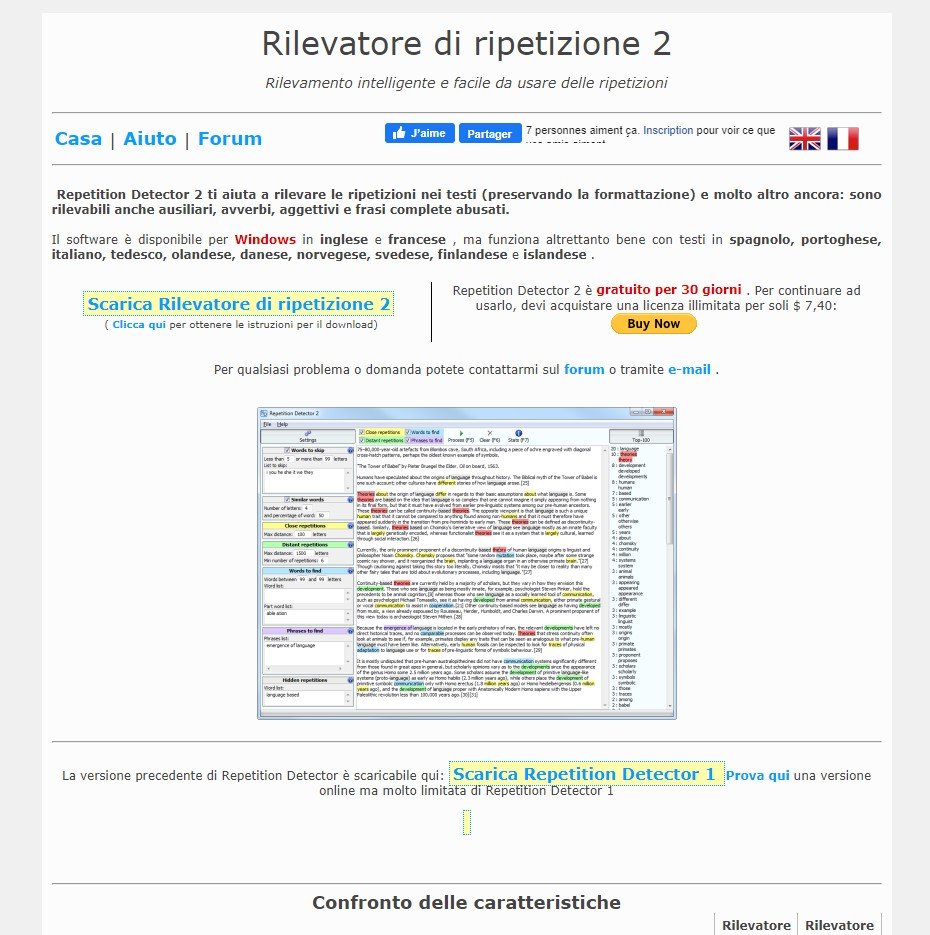
It is a software designed to help you identify repetitions in texts, preserving the original formatting. This tool can detect not only word repetitions, but also the misuse of auxiliaries, adverbs, adjectives, and complete phrases. It is available for use on Windows systems and is available in English and French, but it is equally effective with texts in other languages, including Spanish, Portuguese, Italian, German, Dutch, Danish, Norwegian, Swedish, Finnish, and Icelandic.
To fully use Repetition Detector 2, it is necessary to purchase an unlimited license for $7.40 after a 30-day free trial. This tool is useful for authors, editors, and anyone who needs to identify and correct unwanted repetitions in their texts.
Correzioni Online:
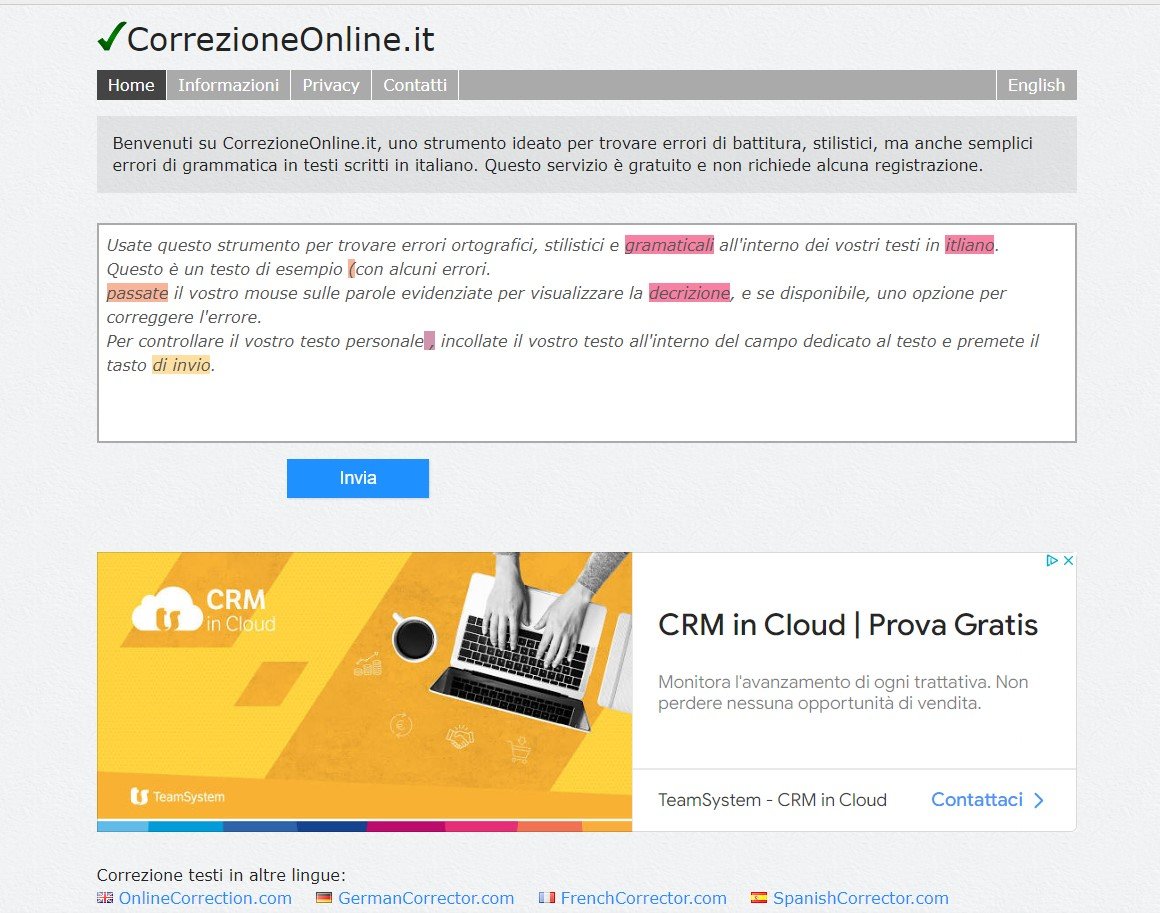
CorrezioneOnline.it is a tool designed to identify spelling, style, and grammar errors in texts written in Italian. This service is free and does not require any registration. You can use it to find and correct spelling, style, and grammatical errors in your Italian texts. Just paste your text into the appropriate field and press the submit button. The site also offers text correction in other languages through links to websites dedicated to each specific language.
Grammarly:
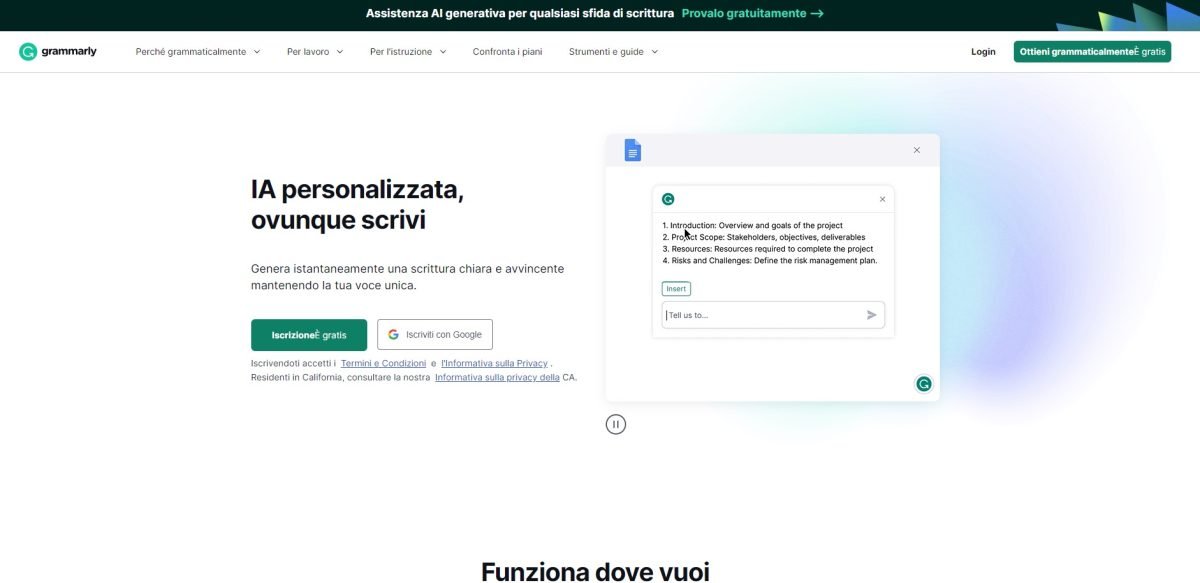
It is a platform that provides writing assistance, thanks to the use of artificial intelligence. This tool is designed to help you write without errors on different platforms and can even improve your text messages. Grammarly is an essential resource for anyone who wants to create high-quality written content. You can learn more about Grammarly by reading our pillar article on the 28 tools for Blogging.
Editing and Proofreading: Understanding the Differences Between Two Tools
It is important to distinguish proofreading from editing. Although they may seem very similar to each other, they are actually two distinct phases in the process of revising a text.
Editing focuses primarily on stylistic and organizational corrections of the text to enhance its overall quality. This includes reviewing the structure of the text, the writing’s fluency, clarity, and consistency of content. The editor ensures that the text is well-organized, fluent, and understandable for the audience.
Proofreading is a more specific phase that focuses on correcting grammatical, spelling, and punctuation errors in the text. The main goal of proofreading is to ensure the formal correctness of the text, making it free of linguistic errors. This process is particularly important to ensure the accuracy and credibility of the final text.
In summary, editing aims to improve the overall quality and structure of the text, while proofreading focuses on correcting grammatical and spelling errors. Both are crucial for the creation of high-quality content.
Tips for Effective Editing: Good Habits and Tricks
“Make Editing” requires a good amount of self-criticism, as it is a meticulous task that takes time and attention to detail. Editing improves not only the text but also the author, helping them grow as a writer and acquire new skills.
To achieve excellent results in proofreading, avoid distractions such as phone, email, and social media. The breaks during work are essential, take into consideration the Pomodoro Technique that we talked about in our article on the 28 Blogging Tools as time management is crucial and allows you to work and review the work with a fresh mind. Furthermore, learn from previous mistakes to constantly improve your editing and proofreading skills.
Conclusions:
In conclusion, editing and proofreading are crucial steps in the process of creating high-quality content in blogging. Investing time and energy in these phases will help you publish impeccable content, impressing your readers and improving your online reputation. Never underestimate the power of editing and proofreading in the world of online writing.
Investing time in the editing and proofreading phase allows you to ensure that your content is of high quality and free from errors that could jeopardize your credibility. Readers appreciate well-crafted and error-free texts because they find them more reliable and engaging. Furthermore, attention to detail in writing can help you stand out from other bloggers and become an authority in your field.
Finally, the power of editing and proofreading in the world of online writing is invaluable. Indeed, as already mentioned, these phases not only improve the quality of your content, but also your online reputation. Well-curated content free from errors can attract more readers, increase your online visibility, and bring about collaboration or partnership opportunities. So, it is important to dedicate time and energy to these crucial phases for the success of your blog.
